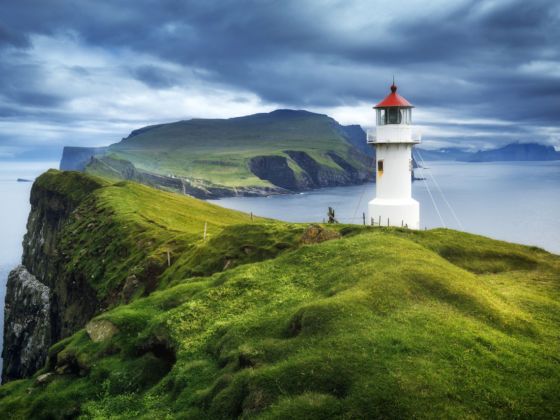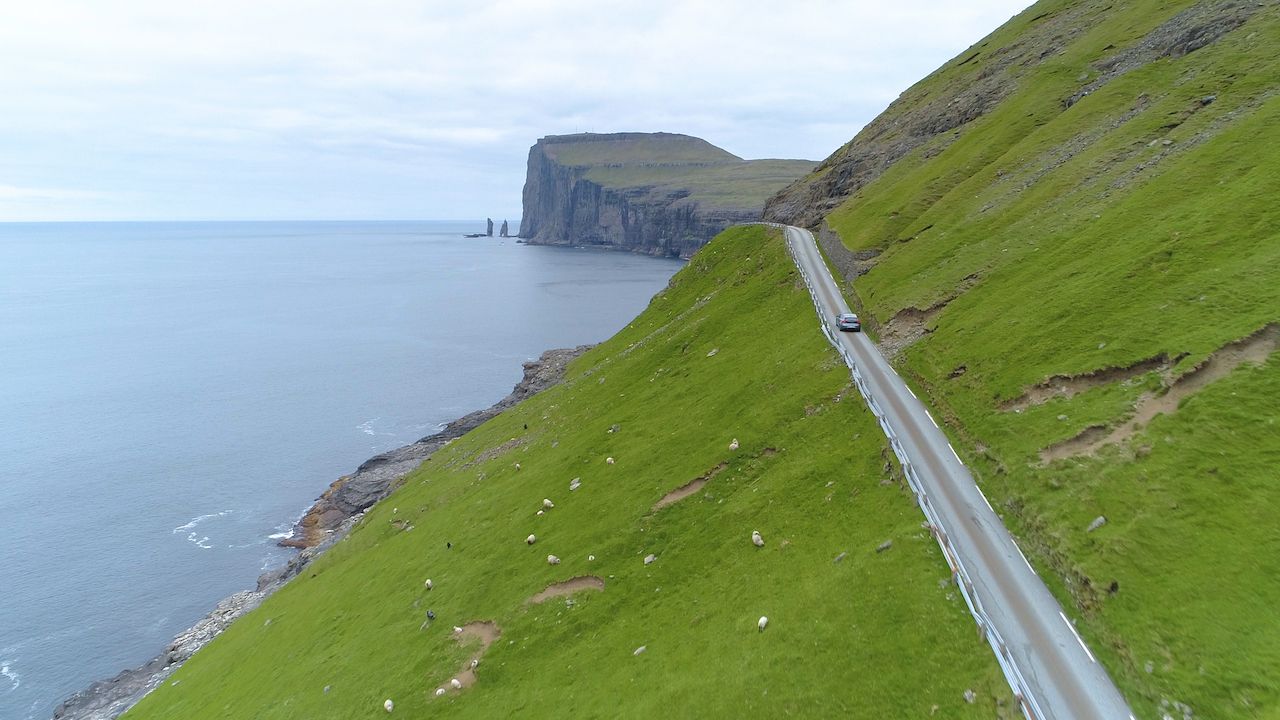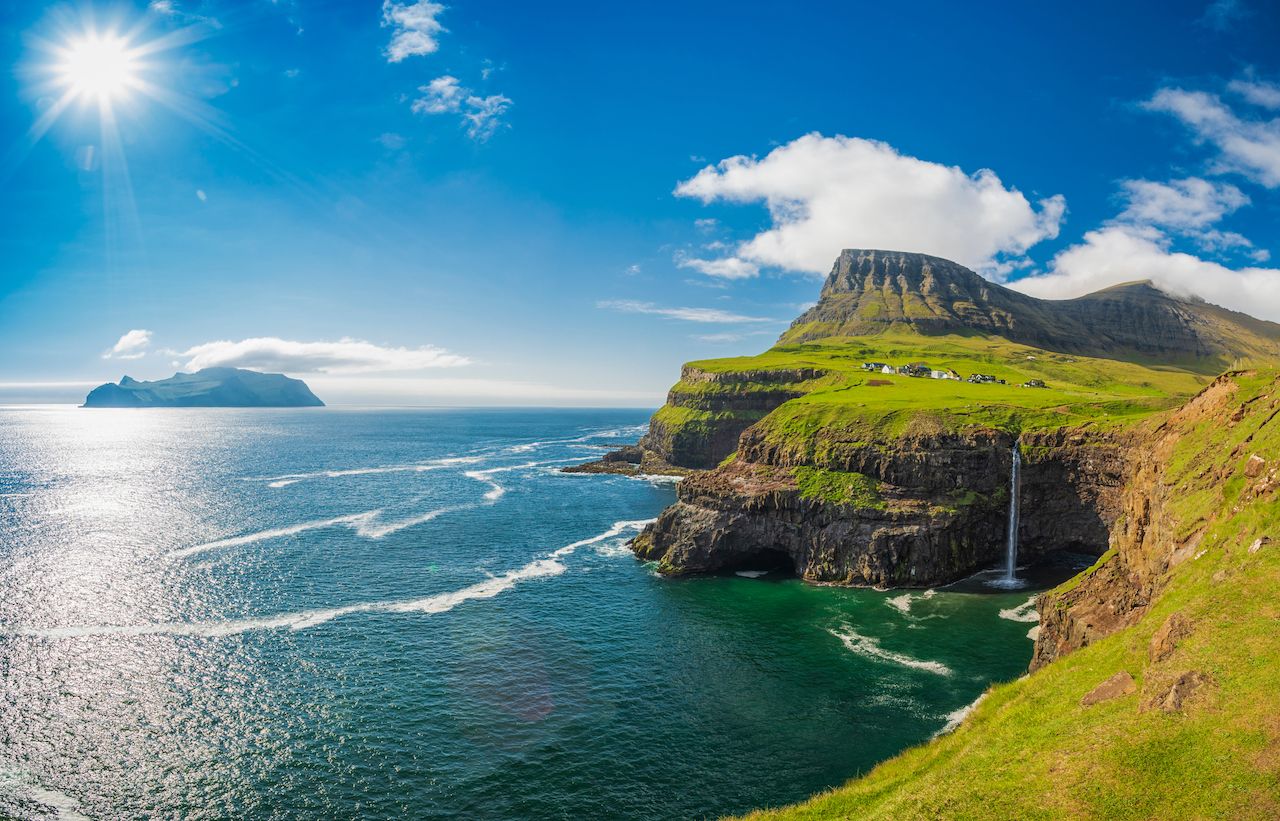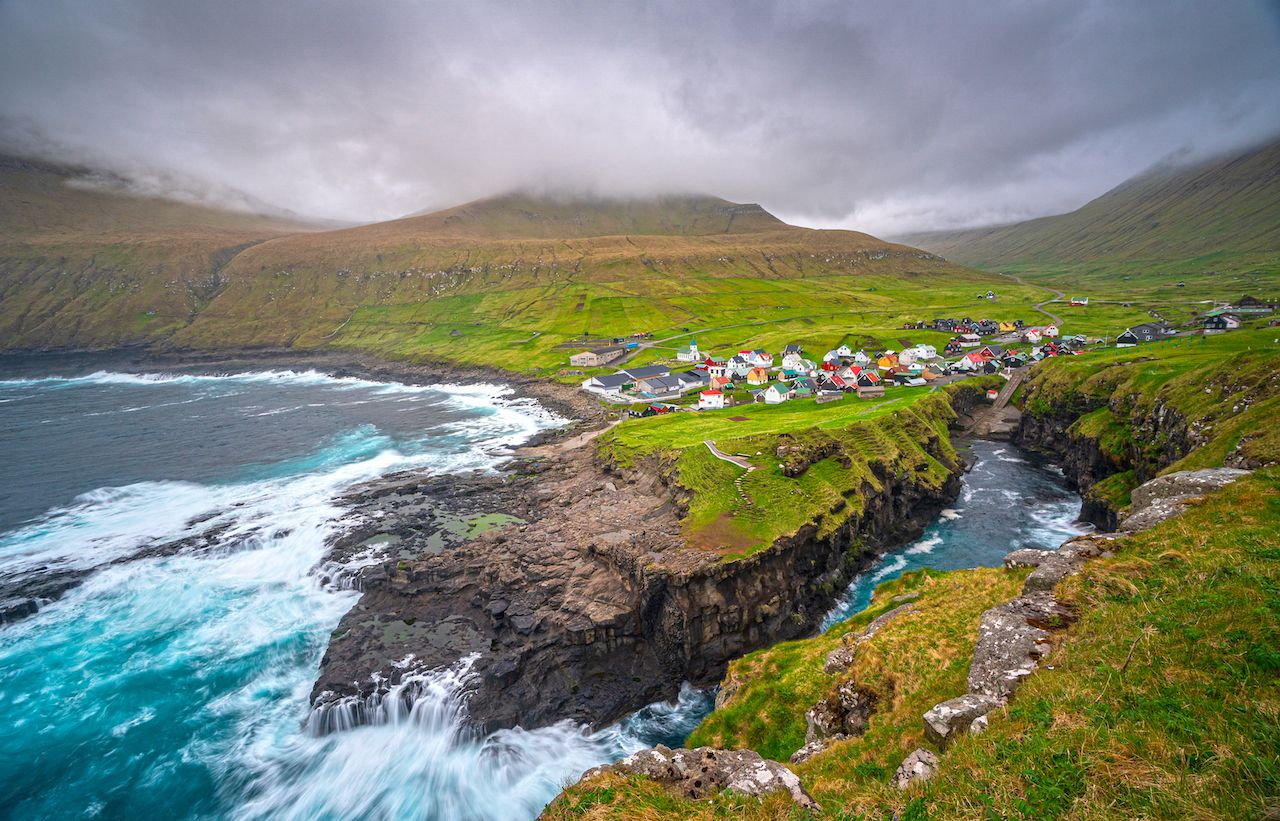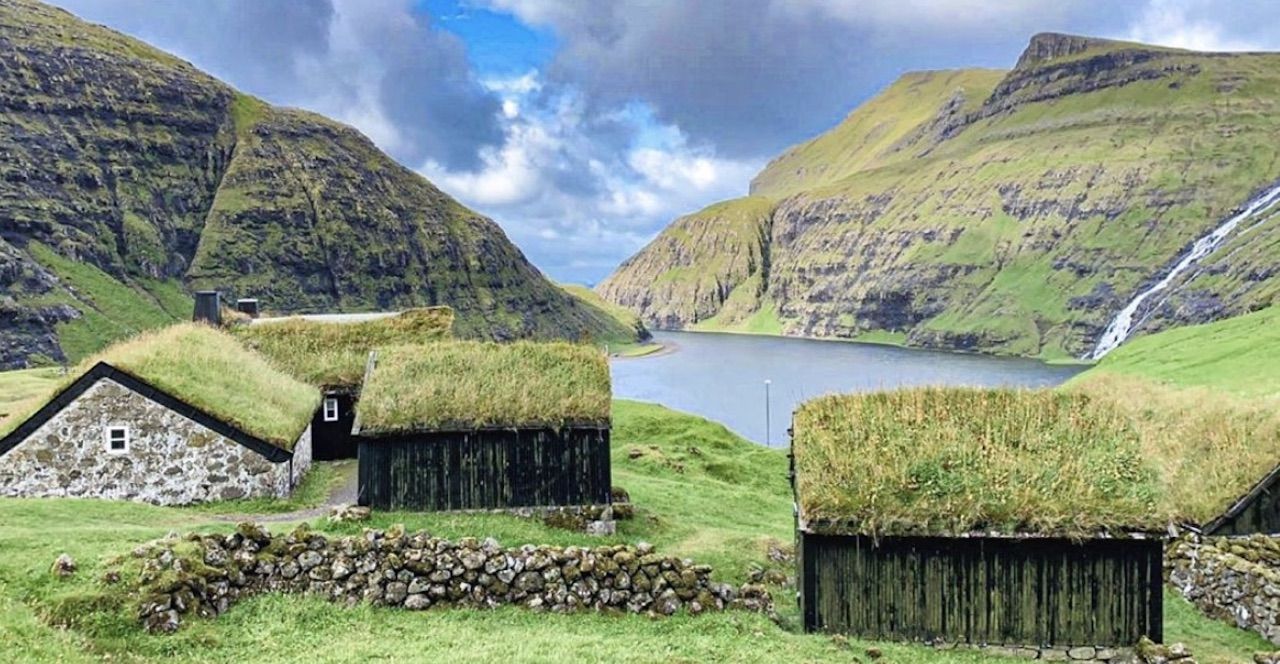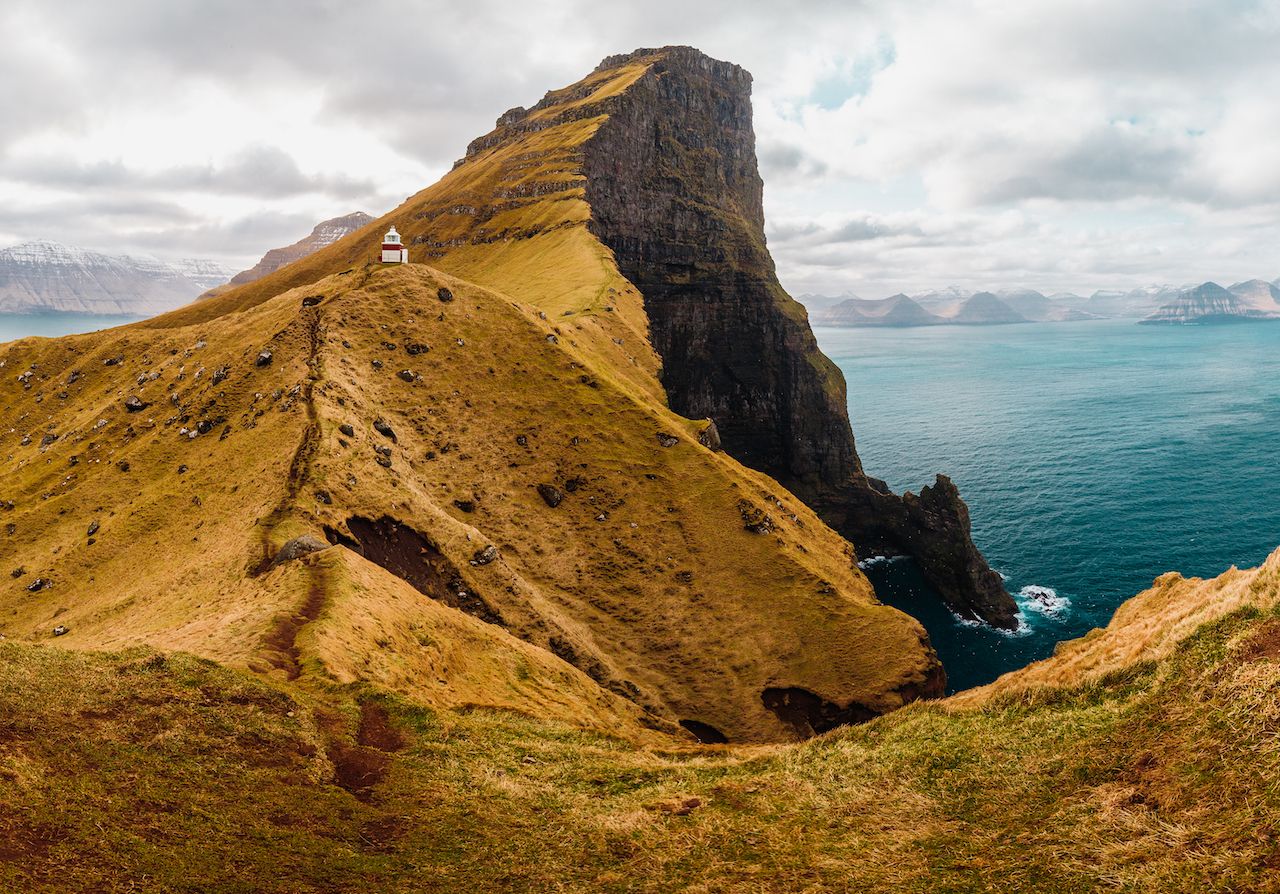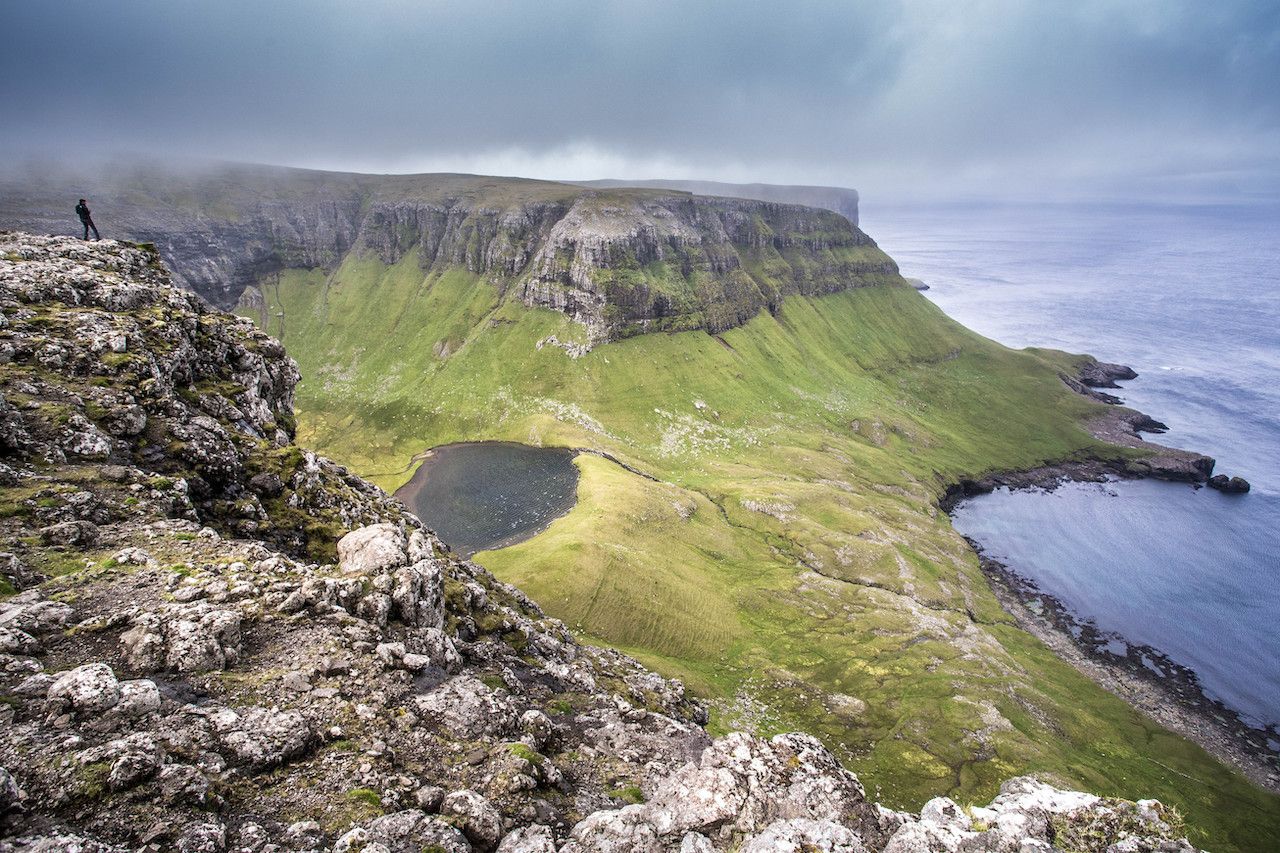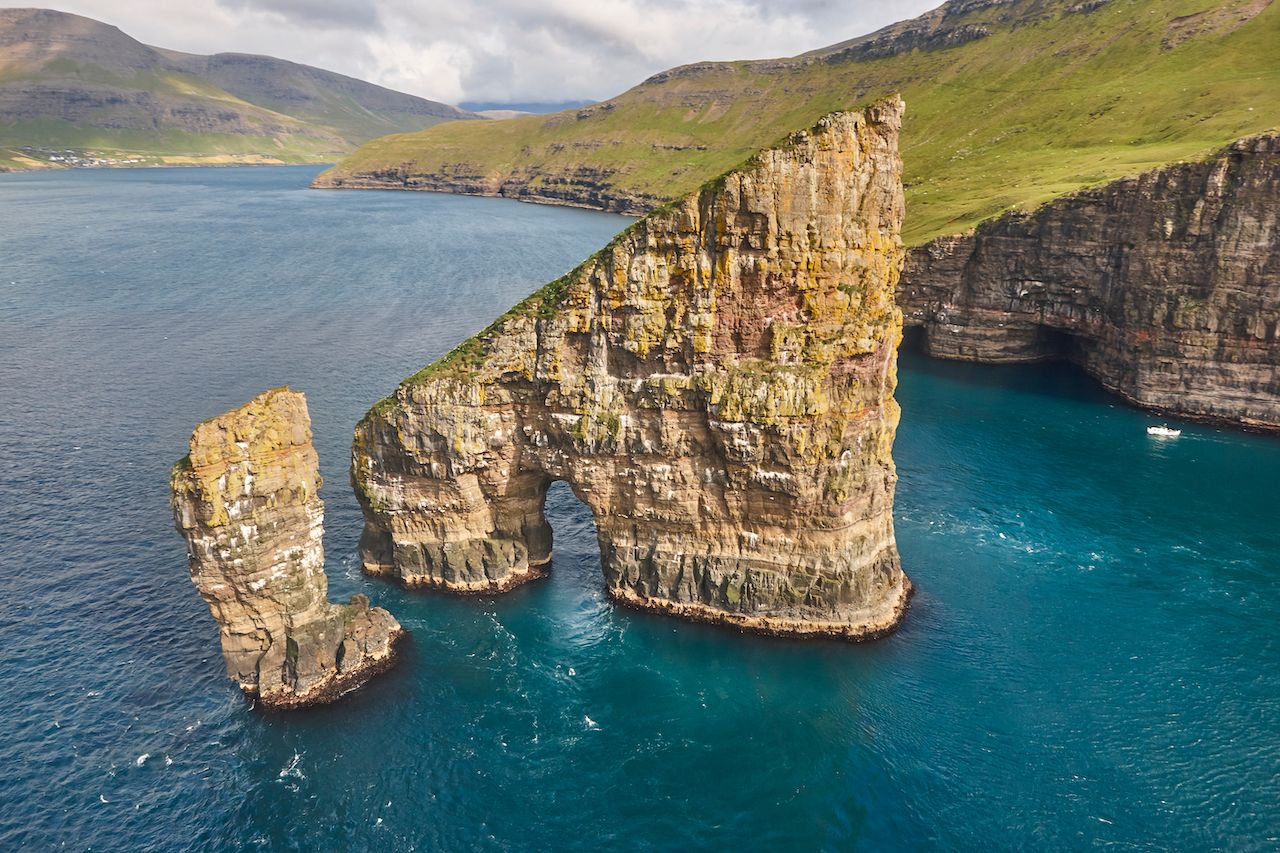The Faroe Islands are so small you have to zoom pretty far in on Google Maps for them to even appear. But located between Norway and Iceland, there’s nothing small about this archipelago. Full of dramatic escarpments and sloping green hillsides, these 18 rocky islands are among the most rugged and overlooked destinations in the world.
With a total population of just under 50,000, the self-governing islands technically belong to Denmark but very much have their own culture, food, aesthetic, language, and even flag. Small fishing villages are connected by green country roads that wind precariously around cliff sides — often without guardrails. It can sometimes be frightening, but driving is really the only way to see the Faroes. After all, a land built for adventure should be explored with as much freedom as possible. Here’s how to road trip through the Faroe Islands.
